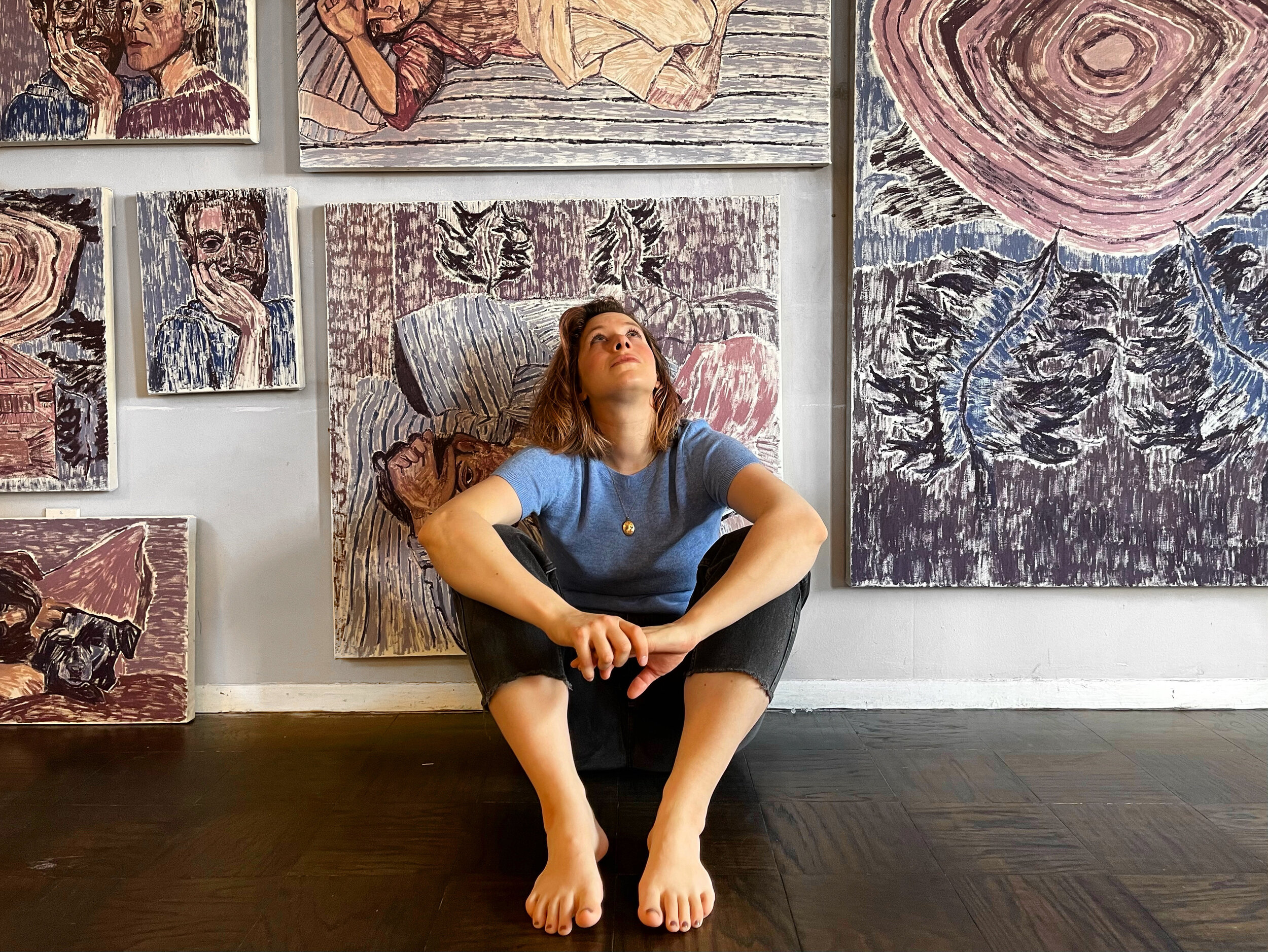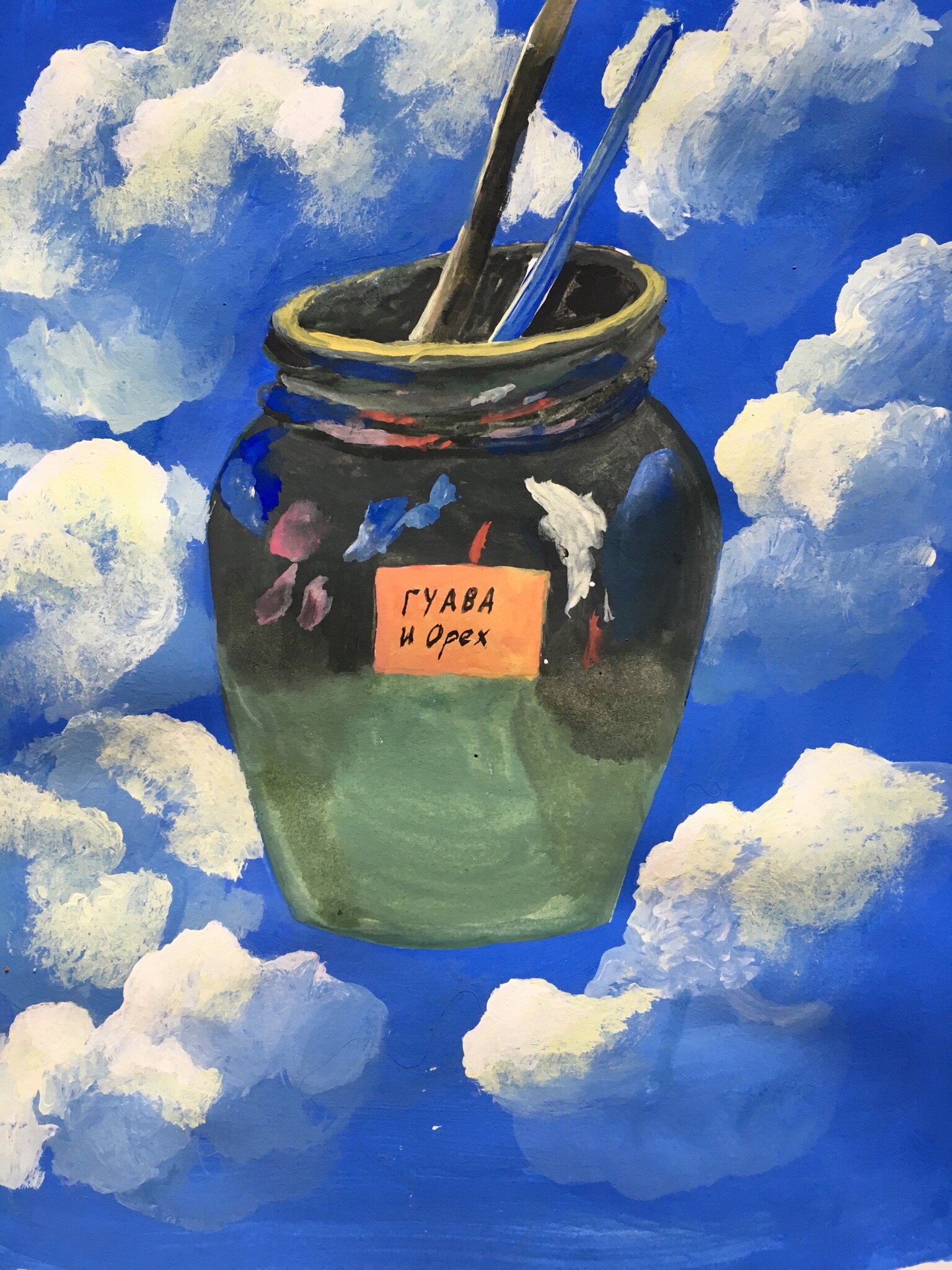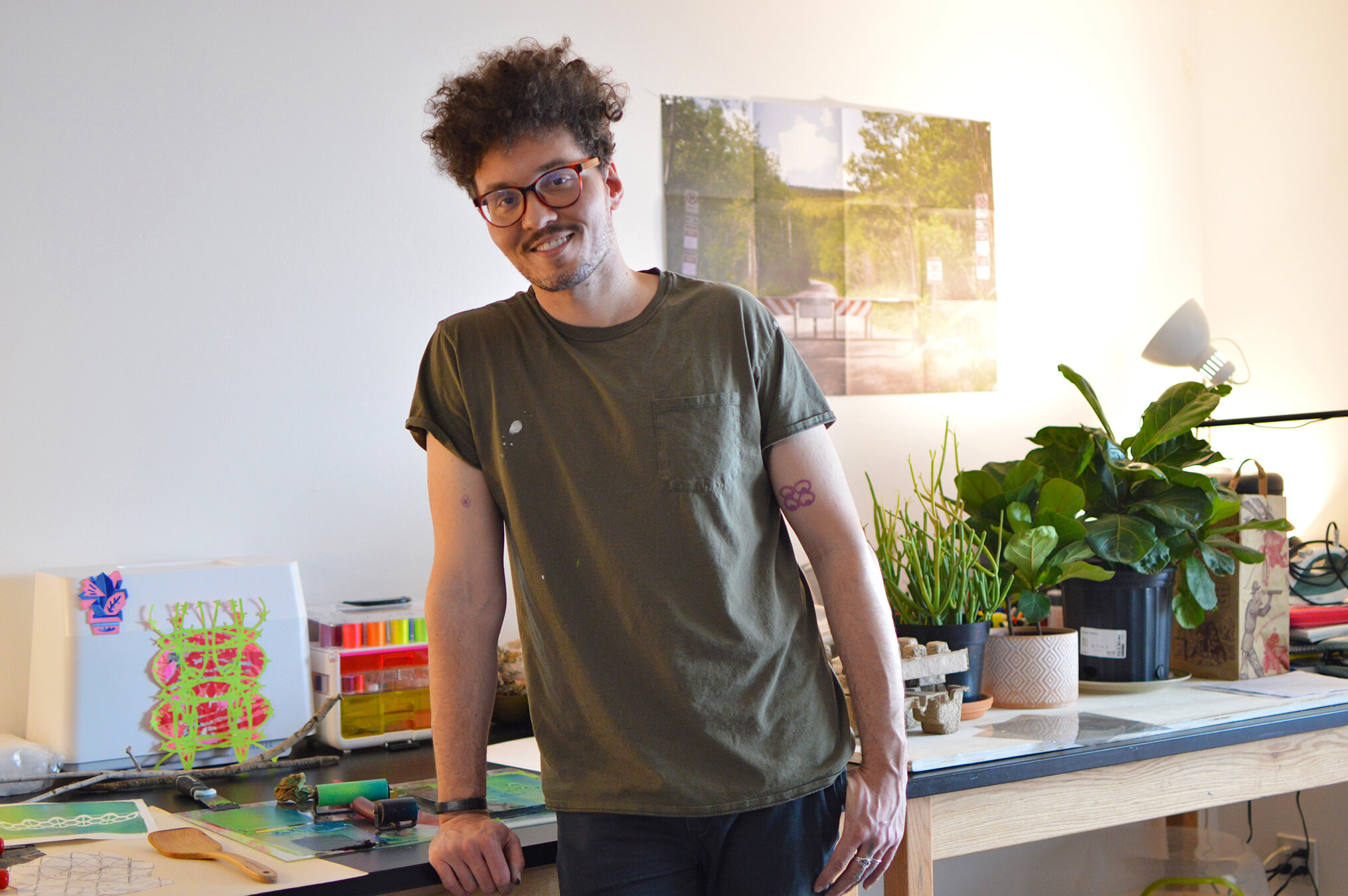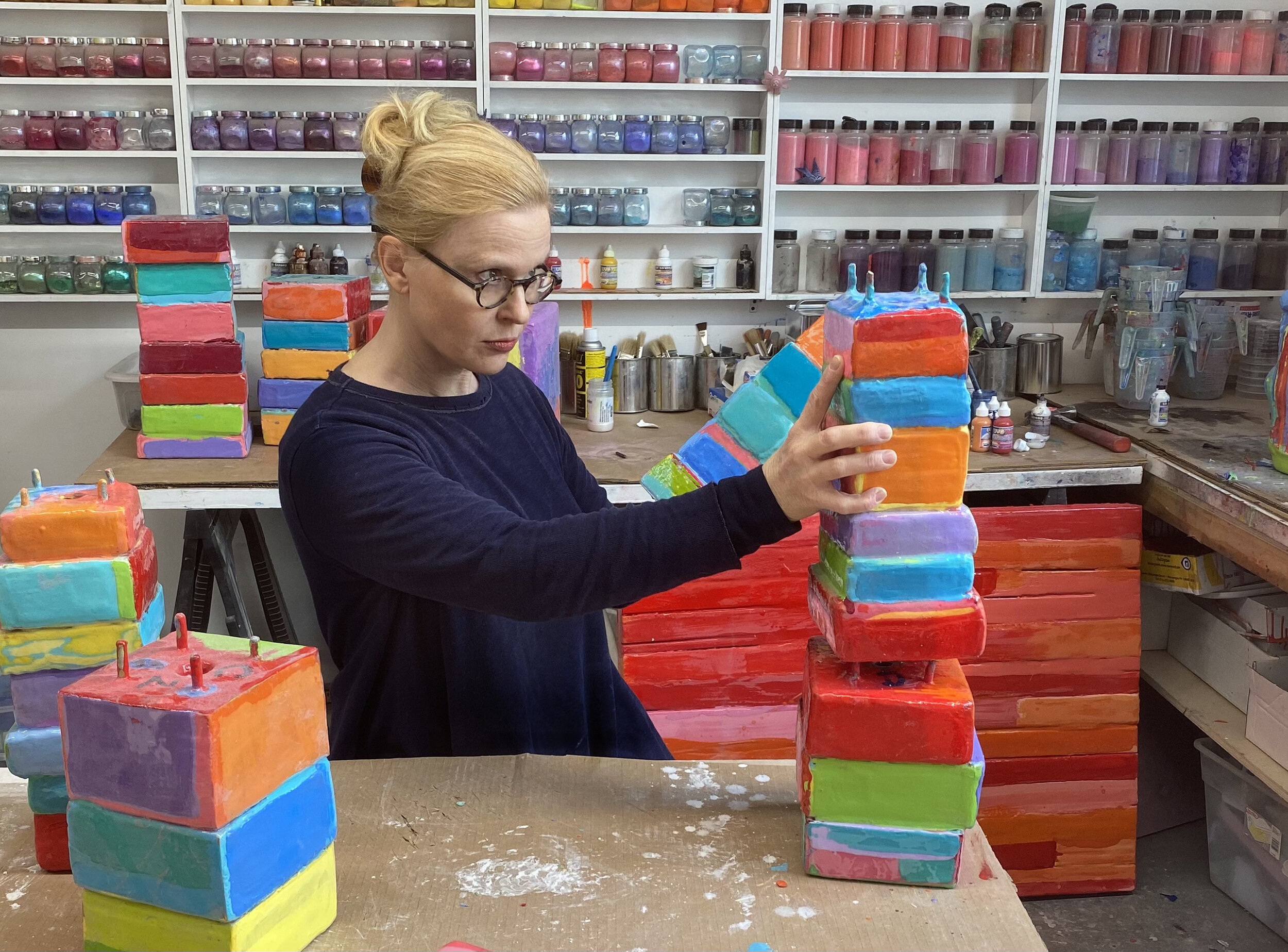Artist Spotlights

Catalina Viejo Lopez de Roda
“My images re-invent themes that have interested me all of my life: reality and illusion, voyeuristic impulses, our relationship with our environment, and existential dichotomies. I often use the rainbow in my work as a symbol of inner light and connection. Visual art, poetry, literature, mythology, psychology, philosophy, nature, and daily interactions with my environment and other beings influence my art-making.”

Amy Bravo
“It’s very rare that I make a work in only one medium. I was a sketchbook kid growing up, always cutting and collaging and combining highlighter, pen, glitter, pressed flowers, anything that glue or tape could hold down. I get really attached to found textures and objects, sometimes they’re quicker to communicate something deeper about what the work means than traditional drawing or painting is.”

Alina Vinogradova
“I am inspired by ancient religions and myths. And often the narratives in my works begin there. But usually I don't come up with a plot in advance or make sketches. I fantasize by painting directly on canvas. And only then, I come up with a story and a name. This is a powerful creative flow from my soul, which I myself sometimes wonder at. “

Alexey Yakovlev
“At some point, I wanted to make a series of adolescent people, to show the time when a person is full of hopes, dreams and fantasies. There is some uncertainty inherent in this age and it is a kind of freedom that many of us lose as we get older.”

Brittany Miller
“My paintings are very flat, and they have a rubbed-on texture that looks like woodblock prints. I cut all my brushes down and scrub on the paint, letting it dry in between layers. At the end of my time at Pratt, I was making large-scale Bible coloring book paintings--almost-black outlines filled in with saturated color--cropped pictures of angels, floods, and falling pillars. My work now has a lot to do with those paintings.“

Yuri Yuan
“Dreams are where our subconsciousness is free to wander, “the return of the repressed” as Freud would say. I am always looking for these moments of connection where the images or narratives break away from reality. I translate these moments onto paper in the form of sketches and piece them together onto canvas.”

Daria Denisova
“The work process begins either with a search: I do compositional searches in my sketchbook, or begin to directly work on canvas. I just sit down in front of a white primed canvas, and my hand is already gliding it over it.“

Alisa Gvozdeva
“The process of making my works is always different, often it is a spontaneous idea, which comes to my mind before or during work. I like to make something new, it's always a challenge for me to try some new techniques or compositions. In spite of the difference between every work I produce, I usually enjoy the process no matter what, I discover the unconscious with no struggle but calm and joy.“

Luis Gutierrez
“When painting my abstract studies, I am inspired by the signs of decay of exterior walls; there is something very interesting about the change of their color due to time and weather. I think that connects to my obsession with history; no matter how much we try to erase our past, somehow, it will always remain present.“

Sofia Yalalova
“The opaque colored background in my work symbolizes the process of growth and development, it helps me to focus all my attention on the portraits. It is also important for me to immerse the viewer in a timeless perception, to shift the viewer's focus to the portrait of a child as much as possible, his childhood dreams, experiences and feelings.“

Marsel Yalalov
“From a technical point of view, this is oil paint on canvas. However, it's far more complex than that. The difficulty of creating the work was in mimicry of a graphic computer file, achieving RGB color in the background. I like to combine classical painting techniques and digital art. I believe that this is a kind of symbiosis of the real and digital world.“

Lucía Rodríguez
“Right now, big part of my process has to do with channeling ideas or inspiration in a useful way so they can become actual artworks and not stay as just ideas. When I walk on the street I see subtle things that inspire me like a pattern, a color palette or the relationship between two shapes. I try to document these little pieces of inspiration by taking pictures or drawing or even writing some notes. I like to think all of these elements mix together in the back of my mind, and somehow, without knowing, I start piecing them together. “

Arina Novak
“To me, online galleries are definitely essential. If not for online spaces, international artists wouldn’t be able to connect and exhibit their works together in the most sufficient and affordable way. I’m very excited to see what the online world has to offer. However, working with physical spaces is something what I truly aspire to do. I’m not talking about galleries, just spaces in general. I’m particularly attracted to curating projects in spaces like independent artistic collectives, clubs, abandoned buildings, warehouses, garages, etc. I think it‘s somethings magical and synergetic about fostering a connection between art and non-commercial spaces. “

Aaron Coleman
“Art History is my first love. I knew I wanted to be an artist when I got to see Botticelli’s Primavera at the Uffizi in Florence when I was 12. Soon after, I became infatuated with Japanese Ukiyo-e. I felt a deep resonance with the artform that was so purely Japanese and striking in its style. I saw myself in the prints and felt pride in the representation they provided. Ukiyo-e is a touchstone for my work. By bringing its recognizable style into contemporary settings I create a space for my own mixed-race identity. “

Zachary Carlisle Davidson
“Texture and layering are intertwined in my work to help me be inventive with depiction in both pictorial and non-representative works. In a romantic sense, it gives me feelings of animism. It’s the kind of stuff that draws me in when I see it elsewhere in others’ artwork, random things I see once and items I engage with on a more routine basis.”

Haley Takahashi
“Art History is my first love. I knew I wanted to be an artist when I got to see Botticelli’s Primavera at the Uffizi in Florence when I was 12. Soon after, I became infatuated with Japanese Ukiyo-e. I felt a deep resonance with the artform that was so purely Japanese and striking in its style. I saw myself in the prints and felt pride in the representation they provided. Ukiyo-e is a touchstone for my work. By bringing its recognizable style into contemporary settings I create a space for my own mixed-race identity. “

Joanna Cortez
“My work has always in some way dealt with ideas of economic migration and the search for shelter/stability. I reference some of the places, good and bad, that I’ve lived in. I reference Mexican blankets, nature, chainlink, and other domestic imagery that’s meaningful to me.”

Lauren Skelly Bailey
“Lately I am revisiting old pots. I am building new layers of coils, smoothing them, and incorporating more glazed forms in this new layer onto the surface of something that has already been fired. The process of firing the work starts over, and the layers keep being applied until deemed done. This second chance of being something else is important to my practice in the studio and out of it.”

Carson Fox
“The stand-alone sculptures are more improvisational as they are made, and I may work on them for months before they are resolved, cutting things off and fussing with the surfaces. Installations are more directed, as I usually have a vision for what it should be and it is a matter of making the pieces that will create it.”

Susanna Koetter
“I’d say most of my work is begins with the appropriation of images, signs, and materials that don’t have an explicit author, but belong more in a collective psyche as terms marked by an inherent ambivalence: country, race, sex, body; the way that flags both indicate where you are, and and also designate the distance to be read far away.”